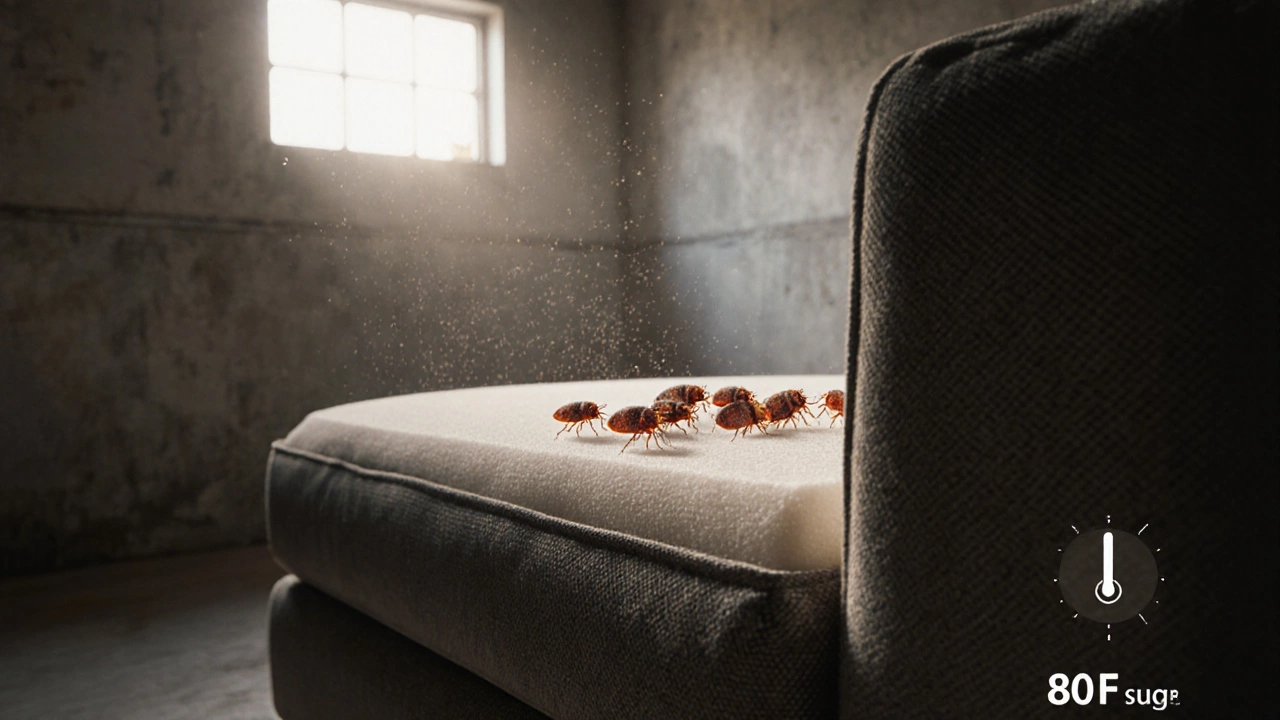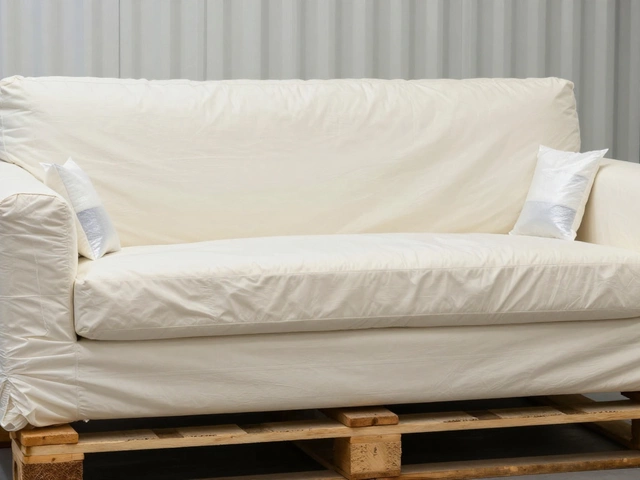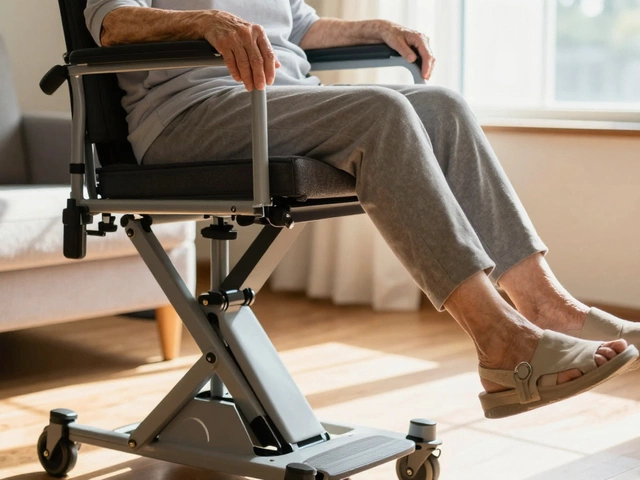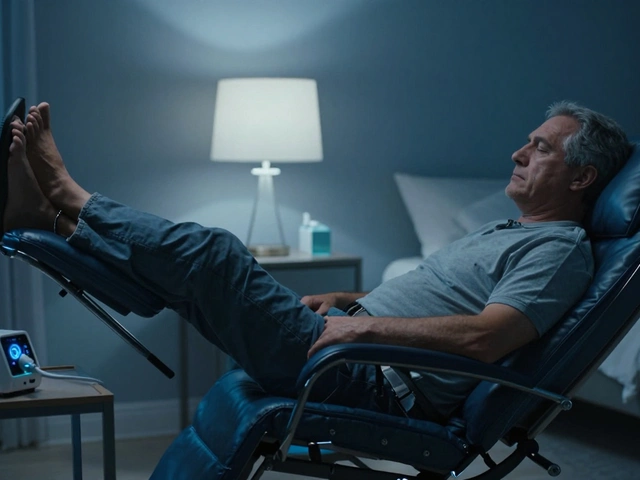Bed Bug Survival Calculator
Estimate Bed Bug Survival Time
Enter environmental conditions to calculate how long bed bugs can survive on stored furniture.
Environmental Conditions
Furniture Type
When you stash bed bugs are a tiny, blood‑feeding insect that can survive long periods without a host. If you’ve ever wondered whether those pests can hitch a ride on a sofa, couch, or wooden chest placed in a garage or attic, you’re not alone. The answer hinges on several factors-temperature, humidity, the type of furniture, and how long the bugs stay hidden. Below we break down the science, share real‑world examples, and give you a checklist to keep your stored pieces bug‑free.
What Makes Bed Bugs So Resilient?
Cimex lectularius, the scientific name for the common bed bug, has evolved to survive without feeding for weeks, sometimes months. Adult females can live up to a year under ideal conditions, and nymphs can go several weeks between meals. Their flat bodies let them slip into seams, fabric folds, and even the tiniest cracks in wood. This ability to hide makes storage environments a perfect temporary shelter.
Key Environmental Factors That Influence Survival
Temperature is the biggest determinant. Bed bugs thrive between 70°F and 90°F (21°C‑32°C). Below 50°F (10°C), their metabolism slows dramatically, extending how long they can survive without food. Above 115°F (46°C) for more than 90 minutes, they die outright. Humidity also plays a role; low humidity speeds dehydration, while moderate levels (40‑60%) keep them comfortable.
Another overlooked factor is Carbon dioxide levels. Bed bugs use CO₂ as a cue to locate hosts. In a sealed storage unit, CO₂ can dip, making the insects less active and more likely to enter a dormant state.
How Long Can They Live on Different Types of Furniture?
Survival varies with the material and construction of the piece. Here’s a quick look at common storage items:
| Furniture Type | Typical Material | Maximum Survival Without Feeding | Notes |
|---|---|---|---|
| Upholstered Sofa | Fabric + Foam | ~5 months | Fabric folds and foam pockets provide perfect hiding spots. |
| Wooden Chest | Solid Wood | ~3 months | Cracks and joints can harbor insects, but fewer soft seams. |
| Metal Filing Cabinet | Steel | ~2 months | Hard, non‑porous surfaces limit hiding places. |
| Mattress | Coil + Fabric | ~6 months | Inside the springs and quilting are classic bed‑bug refuges. |
| Plastic Storage Bin | Polypropylene | ~1 month | Smooth interior; insects tend to exit if a host is nearby. |
These figures assume a stable room temperature of around 80°F (27°C) and moderate humidity. If your storage space is colder, the timeline stretches; if it’s hotter, it shrinks.
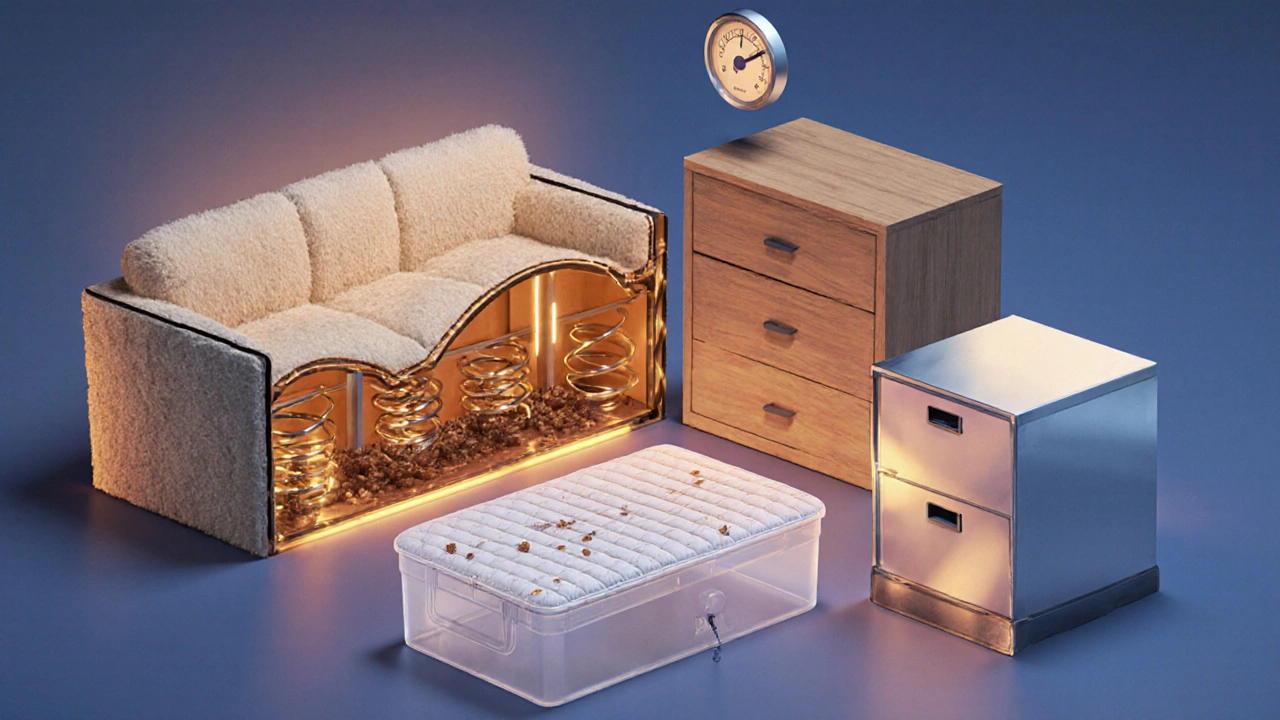
Real‑World Cases From the Field
In Mississauga, a family stored a set of antique wooden armchairs in an unheated garage for eight months. When they retrieved the chairs, a professional Integrated Pest Management (IPM) inspection found live adult bed bugs tucked in the armrest joints. The temperature in the garage rarely dipped below 55°F (13°C), allowing the insects to stay active.
Conversely, a downtown Toronto office placed a metal filing cabinet in a climate‑controlled storage unit set at 60°F (16°C). After six months, no bed bugs were detected, illustrating how cooler, low‑humidity environments can suppress survival.
Preventive Measures Before You Store
- Inspect every piece thoroughly. Look for tiny dark spots (fecal stains) and shed skins.
- Clean fabrics with hot water (at least 120°F/49°C) and dry on high heat for 30 minutes.
- Vacuum wood surfaces, especially seams and joints, then discard the bag.
- Consider encasements for mattresses or pillows; they act as a barrier.
- Seal items in airtight plastic bags or bins with a bed bugs on furniture label to remind future handlers.
When possible, keep storage units at temperatures below 50°F (10°C) for at least two weeks. This cold shock can kill up to 90% of any hidden bugs.
What If You Already Have an Infestation?
If you discover bed bugs after retrieving stored items, act fast:
- Heat treatment: Professionals raise the temperature of the furniture to 135°F (57°C) for 90 minutes, which eliminates all life stages.
- Cold treatment: Exposing items to -4°F (-20°C) for 4 days also works, especially for delicate pieces that can’t handle heat.
- Use residual Insecticide sprays labeled for bed bugs on hard surfaces.
- Enroll in a follow‑up IPM program to monitor re‑infestations.
Remember, bed bug eggs are resistant to many chemicals, so multiple treatments may be necessary.
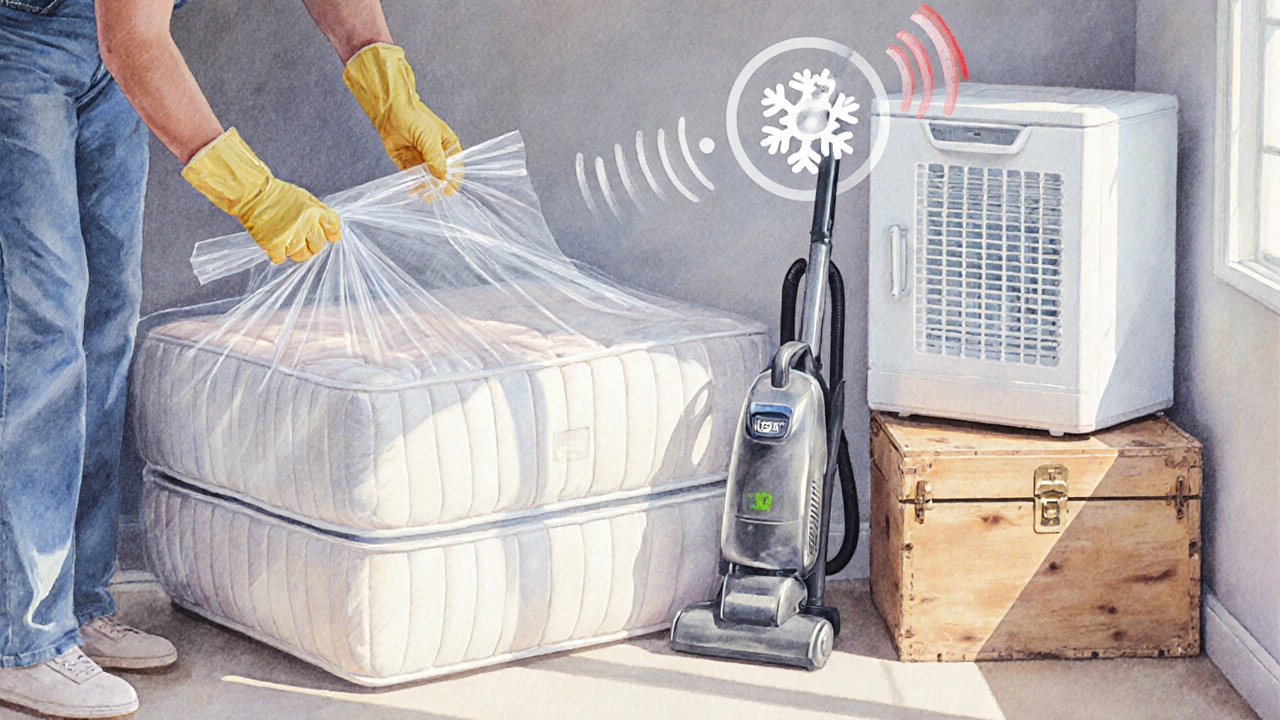
Checklist: Is Your Stored Furniture Safe?
- Temperature consistently below 50°F (10°C) or above 115°F (46°C) for at least 48 hours?
- Humidity controlled between 30‑50%?
- All fabrics pre‑washed and dried on high heat?
- Hard surfaces sealed or covered in airtight containers?
- Any visible dark spots, shed skins, or live insects?
If you answered “yes” to the first three and “no” to the last two, your risk is low. Otherwise, treat before moving the pieces into your home.
Frequently Asked Questions
Can bed bugs survive in a sealed plastic bin?
Yes, but only for a limited time. In a sealed bin without a host, adults may live 2‑4 weeks, while nymphs survive up to 6 weeks. The lack of humidity and CO₂ speeds up dehydration.
Do bed bug eggs hatch inside stored furniture?
Eggs can hatch if the temperature stays within the optimal 70‑90°F range and humidity is above 40%. Once hatched, the young nymphs will look for a blood meal, which they won’t find in storage, so they’ll stay hidden and eventually die.
Is heat treatment safe for wooden furniture?
Professional heat treatments are designed to keep the wood’s temperature below the point where it warps or cracks. Most experts recommend a gradual ramp‑up to 135°F, which is safe for solid wood but may affect delicate finishes.
How long should I keep furniture in a cold storage unit to kill bed bugs?
Maintain a temperature of 0°F (‑18°C) or lower for at least 4 days. This duration kills all life stages, including the hardy eggs.
Can I use a regular household vacuum to remove bed bugs from stored items?
A vacuum with a HEPA filter can capture adults and nymphs, but it won’t kill the eggs. Empty the canister outside and seal it immediately.
Bottom Line
Bed bugs can live on stored furniture anywhere from a few weeks to several months, depending on temperature, humidity, and the material of the piece. By controlling the environment, cleaning every item, and using preventive encasements, you dramatically lower the chance of bringing an unwelcome guest into your home.

